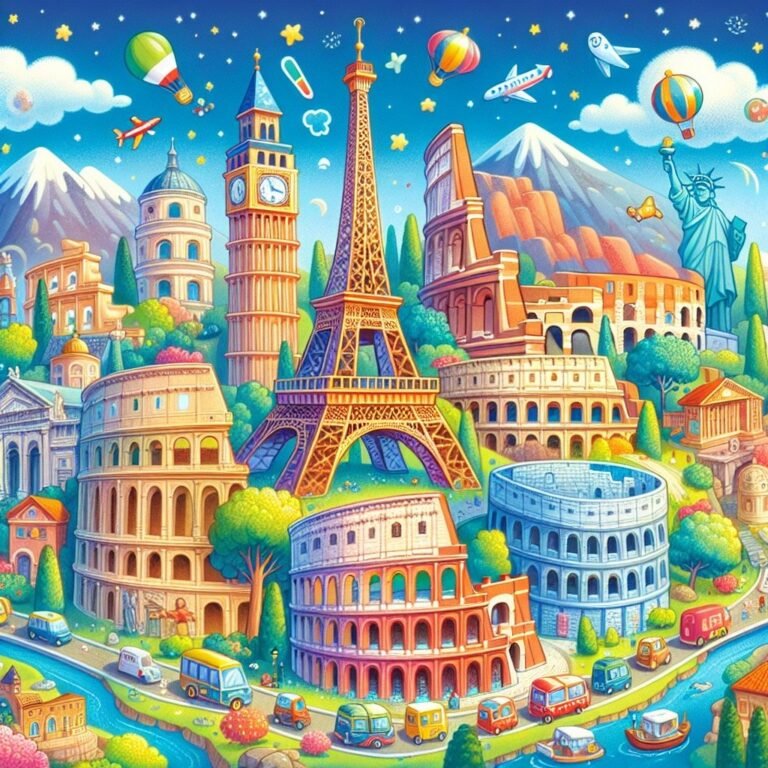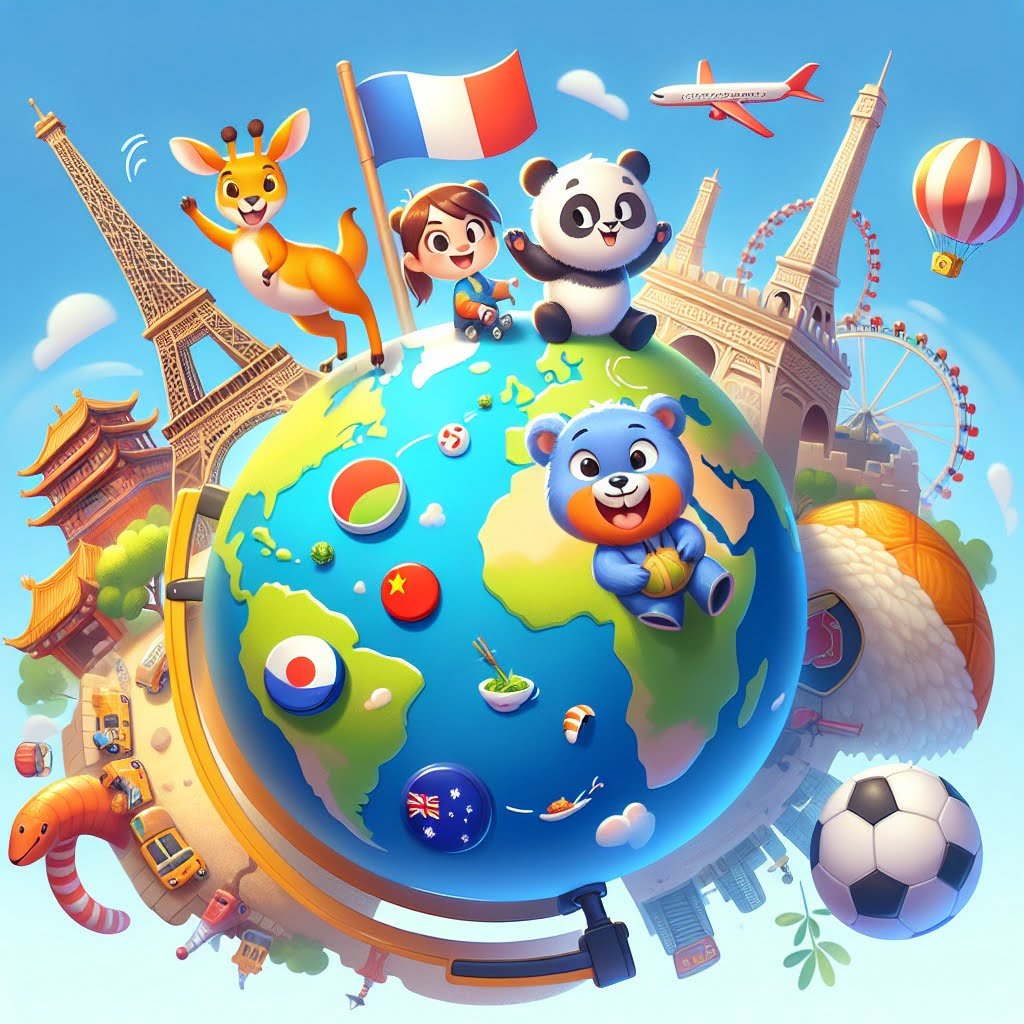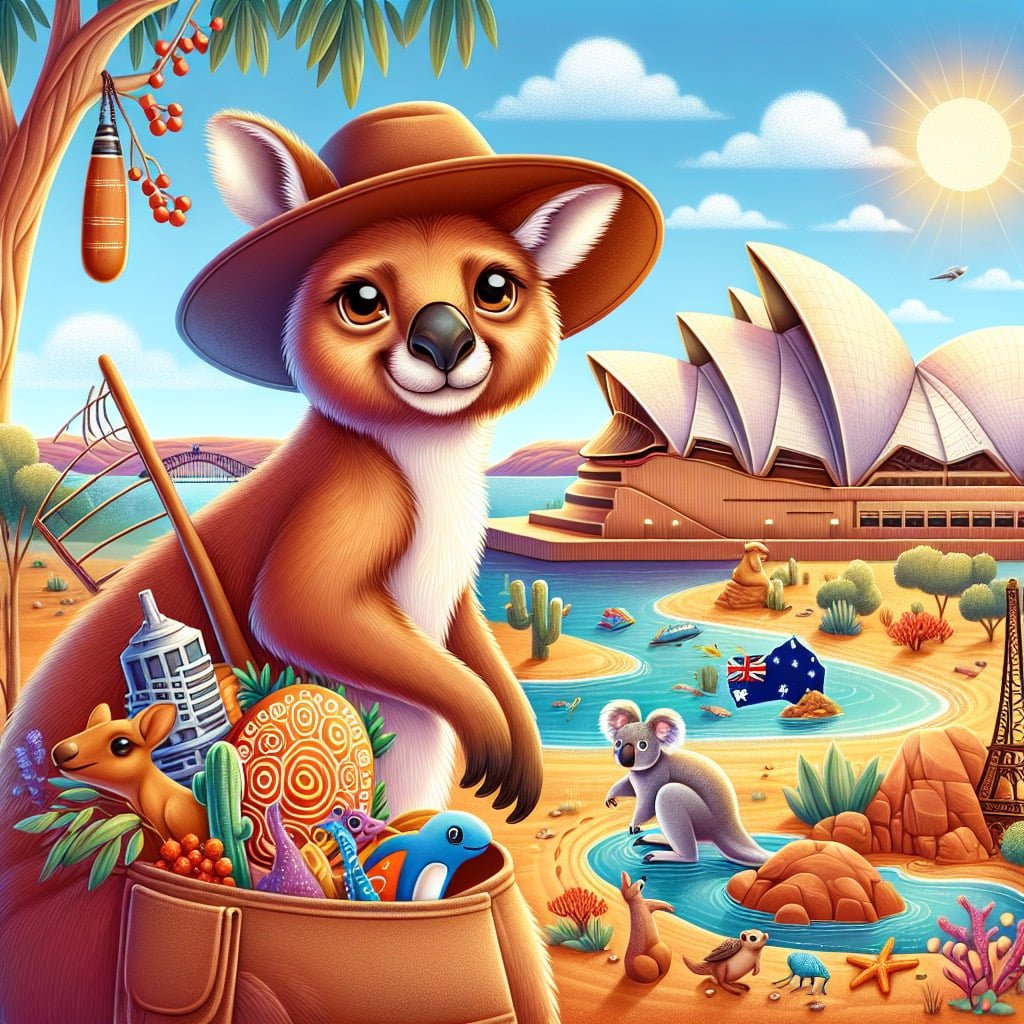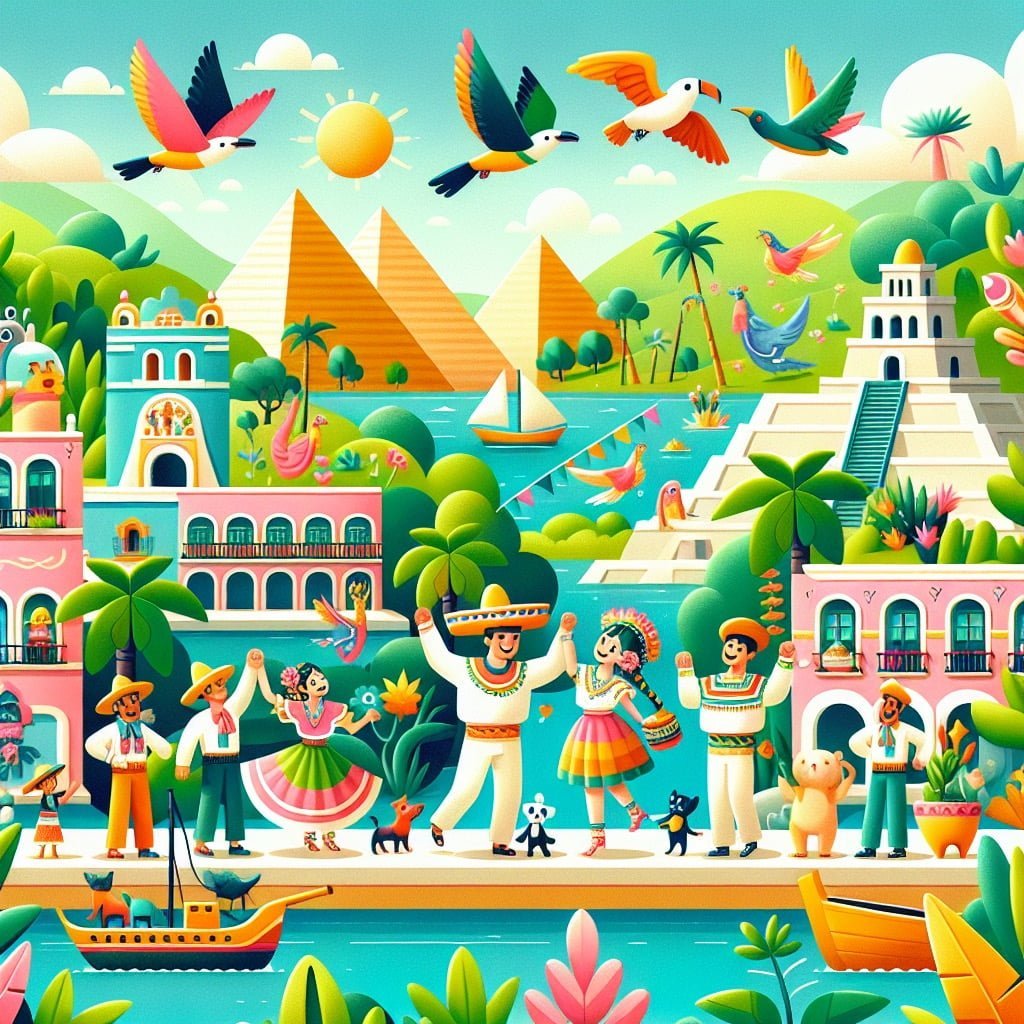Welcome to our exciting post filled with fascinating **Facts About Europe For Kids**! Europe is a continent steeped in history, culture, and natural beauty, offering a plethora of iconic landmarks and unique experiences for young adventurers. From the towering Eiffel Tower in Paris to the ancient Colosseum in Rome, there is so much to discover and explore in this diverse and captivating continent. Join us on a journey as we uncover fun and educational facts about Europe that will spark curiosity and inspire a love for learning in children of all ages. Let’s dive into the wonders of Europe and embark on a thrilling adventure together!
Facts About Europe For Kids
1. The Eiffel Tower in Paris, France
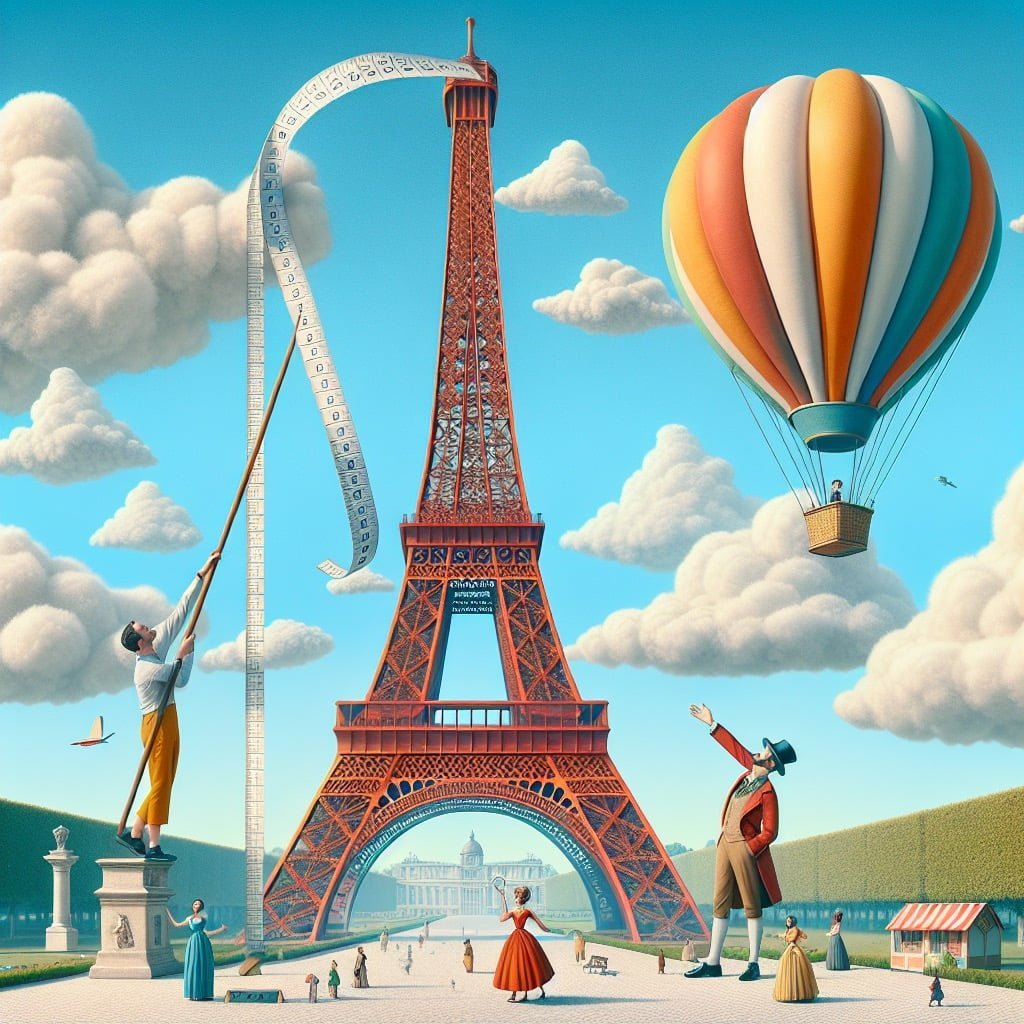
For younger kids: The Eiffel Tower is very tall and has lots of lights at night!
For older kids: The Eiffel Tower is an iconic iron lattice structure that stands at 1,063 feet tall and was originally built as the entrance arch for the 1889 World’s Fair.
Detailed explanation:The Eiffel Tower in Paris, France is one of the most iconic landmarks in Europe, capturing the imagination of millions of visitors each year. Standing at a height of 1,063 feet, this impressive structure was built for the 1889 World’s Fair and was initially met with mixed reactions from the public. However, over time, it has become a cherished symbol of not only Paris but of Europe as a whole.
One of the most fascinating facts about Europe for kids is that the Eiffel Tower was designed by Gustave Eiffel, a renowned French engineer. Originally intended to be a temporary exhibit, the tower’s unique design and engineering marvels captured the hearts of Parisians and tourists alike. Its intricate iron lattice work is not only aesthetically pleasing, but also incredibly sturdy, allowing the tower to withstand the test of time and weather.
Another interesting fact about Europe for kids is that the Eiffel Tower was once the tallest man-made structure in the world. It held this title for an impressive 41 years until the completion of the Chrysler Building in New York City in 1930. Despite losing its title, the Eiffel Tower continues to be a must-see attraction for anyone visiting Paris, offering breathtaking views of the city from its observation decks.
In conclusion, the Eiffel Tower in Paris, France is not only a symbol of European engineering prowess, but also a testament to the beauty and grandeur of the continent. Its rich history and enduring popularity make it a fantastic topic for kids to learn about Europe and its remarkable landmarks.
Facts About Europe For Kids
2. The Colosseum in Rome, Italy

For younger kids: The Colosseum used to be a big stadium for watching battles and shows!
For older kids: The Colosseum is an ancient amphitheater where gladiator contests and public spectacles, such as animal hunts and mock sea battles, were held in Roman times.
Detailed explanation:The Colosseum in Rome, Italy is one of the most iconic landmarks in Europe, attracting millions of tourists each year. This ancient amphitheater is a symbol of the power and grandeur of the Roman Empire, and is a key part of European history.
One of the fascinating Facts About Europe For Kids is that the Colosseum was originally known as the Flavian Amphitheater, named after the Flavian dynasty of emperors who built it. Construction of the Colosseum began in 70-72 AD under the emperor Vespasian and was completed in 80 AD under his son Titus. The amphitheater could hold up to 80,000 spectators and was used for gladiatorial contests, animal hunts, and other public spectacles.
Another interesting fact about the Colosseum is its innovative design. The amphitheater was the largest of its kind in the Roman Empire and featured a complex system of underground tunnels and chambers where gladiators, animals, and scenery could be raised into the arena. The Colosseum also had a retractable awning called the velarium, which could be used to shade spectators from the sun.
Today, the Colosseum stands as a testament to the ingenuity and architectural prowess of the ancient Romans. It is a UNESCO World Heritage Site and a must-see destination for anyone interested in European history. The Colosseum continues to inspire awe and wonder in visitors from around the world, making it a truly unforgettable experience for people of all ages.
Facts About Europe For Kids
3. The Northern Lights in Scandinavia

For younger kids: The Northern Lights are colorful lights in the sky that happen in the north!
For older kids: The Northern Lights, also known as Aurora Borealis, are a natural light display in the Earth’s polar regions caused by the collision of charged particles with atoms in the high-altitude atmosphere.
Detailed explanation:The Northern Lights, also known as the Aurora Borealis, are a spectacular natural light display that can be seen in the night sky in regions close to the North Pole, such as Scandinavia in Europe. These mesmerizing lights are caused by solar particles entering the Earth’s atmosphere and colliding with gases such as oxygen and nitrogen.
One of the most popular places to witness the Northern Lights in Scandinavia is in Norway, specifically in areas like Tromso and the Lofoten Islands. These locations are known for their clear skies and minimal light pollution, making them ideal for spotting the colorful display.
For kids visiting Scandinavia, witnessing the Northern Lights can be a magical and unforgettable experience. It is important to remember that the best time to see the lights is during the winter months when the nights are long and dark. It is also helpful to check the weather forecast and plan your trip accordingly to maximize your chances of seeing the aurora.
In addition to the Northern Lights, there are many other fascinating facts about Europe for kids to explore while visiting Scandinavia. For example, they can learn about the unique wildlife in the region, such as reindeer and Arctic foxes, or discover the rich history and culture of the indigenous Sami people. Scandinavia is also home to breathtaking natural landscapes, from fjords and mountains to forests and lakes, providing endless opportunities for outdoor adventures.
Overall, the Northern Lights in Scandinavia are just one of the many amazing things to discover in Europe for kids. Whether it’s marveling at the aurora borealis or exploring the diverse ecosystems of the region, there is no shortage of educational and exciting experiences waiting to be had in this magical part of the world.
Facts About Europe For Kids
4. Neuschwanstein Castle in Germany
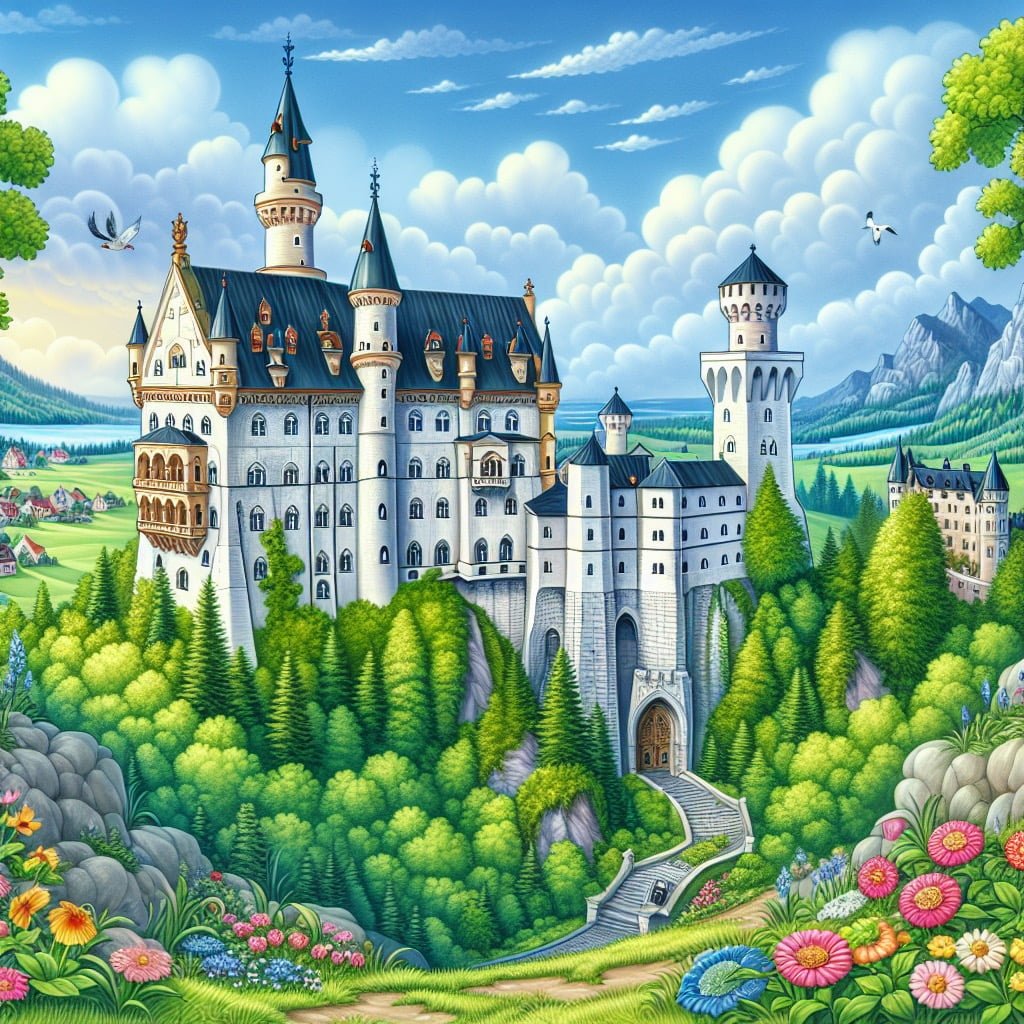
For younger kids: This castle looks like a fairy tale castle with towers and turrets!
For older kids: Neuschwanstein Castle is a 19th-century Romanesque Revival palace built on a rugged hill in Bavaria, Germany, and served as the inspiration for the Sleeping Beauty Castle at Disneyland.
Detailed explanation:Neuschwanstein Castle, located in Germany, is a stunning example of European architecture and history that captivates visitors of all ages. As one of the most iconic castles in the world, it offers a glimpse into the romanticism of the 19th century and the vision of King Ludwig II of Bavaria.
Facts about Europe for kids can provide a deeper understanding of the rich cultural heritage that Neuschwanstein Castle represents. The castle was commissioned by King Ludwig II in 1869 and was intended to be a retreat and homage to the composer Richard Wagner. Its fairy-tale appearance, with turrets, spires, and a picturesque setting in the Bavarian Alps, has inspired many fairy tales, movies, and even theme park castles.
One interesting fact about Neuschwanstein Castle is that it served as the inspiration for the famous Disney castle. The castle’s interior is just as impressive as its exterior, with ornate rooms decorated with intricate carvings, elaborate paintings, and luxurious furnishings. The Throne Hall, in particular, showcases the grandeur and opulence of the castle, with a decorative ceiling and majestic throne.
Visitors can explore the castle grounds, take guided tours, and learn about the history and legends surrounding this architectural masterpiece. Learning about Neuschwanstein Castle can be a fun and educational experience for kids, as it provides a window into European history, art, and culture. By delving into facts about Europe for kids, they can appreciate the beauty and significance of Neuschwanstein Castle and its place in European history.
Facts About Europe For Kids
5. The Acropolis in Athens, Greece

For younger kids: The Acropolis has old buildings and looks like a big fort on a hill!
For older kids: The Acropolis is an ancient citadel located on a rocky outcrop above the city of Athens, containing several historic buildings of great architectural and historic significance, the most famous being the Parthenon.
Detailed explanation:The Acropolis in Athens, Greece is a historical and architectural marvel that continues to capture the imaginations of people around the world, including children. It is a UNESCO World Heritage site and one of the most famous landmarks in Europe.
One of the most fascinating **Facts About Europe For Kids** is that the Acropolis is an ancient citadel located on a high rocky hill overlooking the city of Athens. It is home to several ancient buildings of great significance, the most famous of which is the Parthenon. The Parthenon is a temple dedicated to the goddess Athena, the patron deity of Athens.
Kids are often amazed by the sheer size and grandeur of the Acropolis, as well as the intricate details of the architecture. They are also intrigued by the stories of ancient Greek mythology that are associated with the site. For example, they may learn about the mythical contest between Athena and Poseidon for the patronage of Athens, which was supposedly won by Athena by giving the city the olive tree.
Visiting the Acropolis can be a great educational experience for kids, as they can learn about ancient Greek history, art, and architecture. They can also gain an appreciation for the importance of preserving and protecting cultural heritage sites like the Acropolis. Overall, the Acropolis in Athens is an incredible site that offers a glimpse into the rich history and culture of Europe.
Facts About Europe For Kids
6. The Leaning Tower of Pisa in Italy

For younger kids: The Leaning Tower looks like it’s about to fall over, but it hasn’t fallen yet!
For older kids: The Leaning Tower of Pisa is a freestanding bell tower of the cathedral of the Italian city of Pisa, known worldwide for its unintended tilt.
Detailed explanation:The Leaning Tower of Pisa in Italy is one of the most famous landmarks in Europe, attracting millions of tourists from around the world each year. Its iconic tilt is due to a combination of poor foundation and soft ground, which caused the tower to start leaning during its construction in the 12th century.
One of the most interesting **Facts About Europe For Kids** is that the Leaning Tower of Pisa was not always leaning. It was initially designed to stand vertically but started leaning due to the unstable soil underneath it. The tilt continued to increase over the years, reaching a dangerous angle of over 5 degrees before efforts were made to stabilize the tower in the late 20th century.
Despite its lean, the tower has stood for centuries and has become a symbol of Italy and a UNESCO World Heritage Site. Visitors can climb the 294 steps to the top of the tower and enjoy panoramic views of the city of Pisa.
In addition to its famous tilt, the Leaning Tower of Pisa is also known for its stunning architecture. The tower is made of white marble and features intricate carvings and arches, showcasing the skill and craftsmanship of the builders from the medieval period.
Overall, the Leaning Tower of Pisa is not only a fascinating architectural marvel but also a testament to the resilience and creativity of the people of Europe. It serves as a reminder of the rich history and cultural heritage of the continent, making it a must-visit destination for anyone interested in **Facts About Europe For Kids**.
Facts About Europe For Kids
7. The Running of the Bulls in Pamplona, Spain

For younger kids: People run really fast to get away from big bulls in the street!
For older kids: The Running of the Bulls is a practice that involves running in front of a small group of bulls that have been let loose on a course of a sectioned-off part of a town’s streets.
Detailed explanation:The Running of the Bulls in Pamplona, Spain is a traditional event that takes place during the annual San Fermín festival. This event, known as the encierro in Spanish, involves releasing bulls onto the streets of Pamplona while participants, often dressed in traditional white clothing with red scarves, run alongside them. The origins of this tradition date back to the 14th century, when bulls were transported to the bullfighting ring through the streets of the city. Over time, the event evolved into the adrenaline-filled spectacle that it is today.
One of the most interesting Facts About Europe For Kids is that the Running of the Bulls is not without its risks. Every year, hundreds of participants are injured during the event, with some suffering serious injuries from being gored by the bulls. Despite the danger, the event continues to attract thousands of participants and spectators from around the world.
The Running of the Bulls is just one example of the unique cultural traditions that can be found throughout Europe. Each country in Europe has its own set of traditions, festivals, and customs that are passed down from generation to generation. These traditions help to define the cultural identity of each country and provide a sense of connection to the past.
In conclusion, the Running of the Bulls in Pamplona, Spain is a fascinating event that showcases the thrill-seeking side of Spanish culture. While it may not be for everyone, it is certainly an experience that provides a unique glimpse into the traditions of Europe.
Facts About Europe For Kids
8. The Snowy Alps Mountains
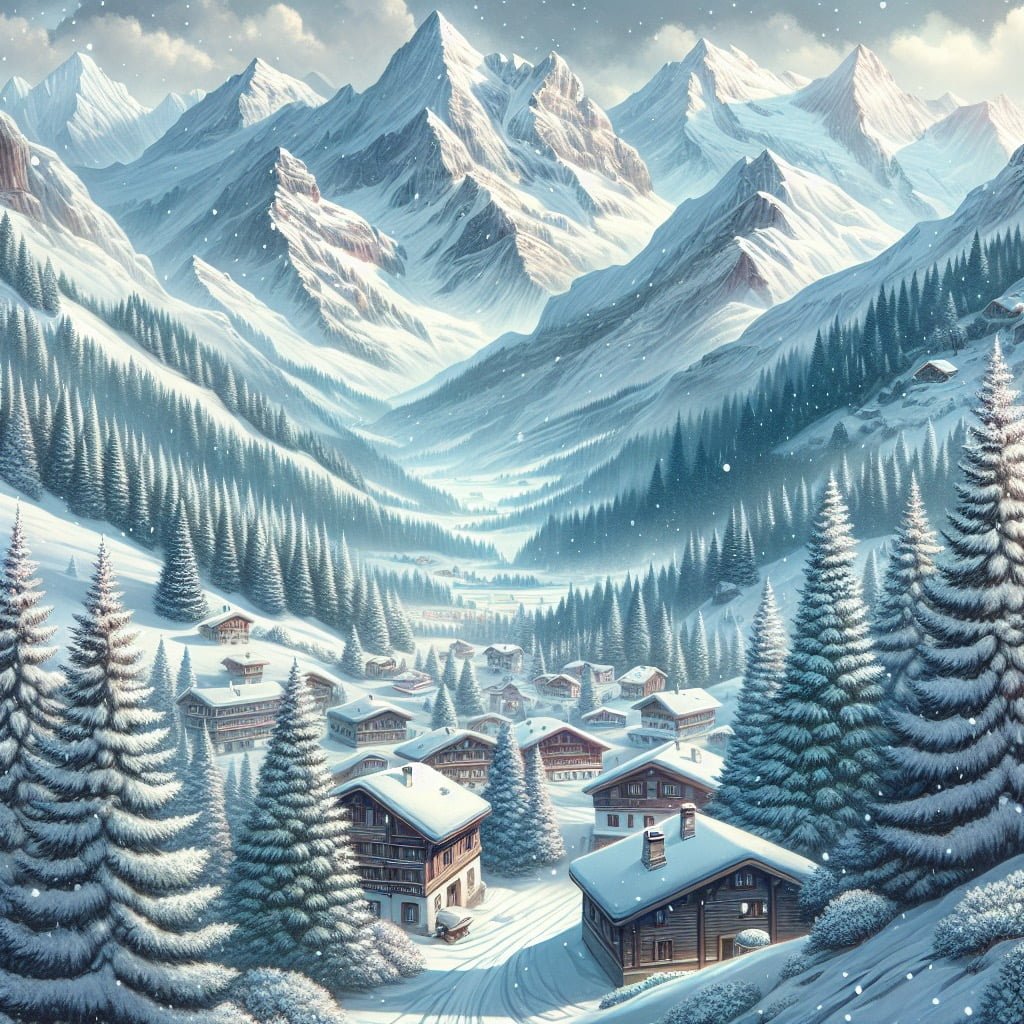
For younger kids: The Alps are big snowy mountains that go through many countries!
For older kids: The Alps are the highest and most extensive mountain range system that lies entirely in Europe, stretching approximately 750 miles across eight Alpine countries.
Detailed explanation:The Snowy Alps Mountains are a breathtaking natural wonder located in Europe. These majestic peaks stretch across several countries including France, Italy, Switzerland, Austria, and Germany. The Alps are known for their stunning beauty, as well as for being a popular destination for winter sports such as skiing and snowboarding.
One of the most fascinating Facts About Europe For Kids is that the Alps are home to some of the highest peaks on the continent, including Mont Blanc, which is the highest peak in Western Europe. The Alps are also a hotspot for biodiversity, with a wide variety of plant and animal species calling this mountain range home.
In addition to being a popular destination for winter sports enthusiasts, the Alps also offer a range of outdoor activities for visitors to enjoy year-round. From hiking and mountain biking in the summer months, to skiing and snowshoeing in the winter, there is no shortage of ways to explore the stunning landscapes of the Alps.
The Alps also play a crucial role in Europe’s water supply, as they are a major source of freshwater for the surrounding regions. The melting snow and glaciers in the Alps feed into rivers that provide water for millions of people living in Europe.
Overall, the Snowy Alps Mountains are a truly remarkable natural wonder that not only provide endless opportunities for outdoor adventure, but also play a vital role in supporting the ecosystems and communities that call Europe home.
Facts About Europe For Kids
9. The Statue of Liberty in France
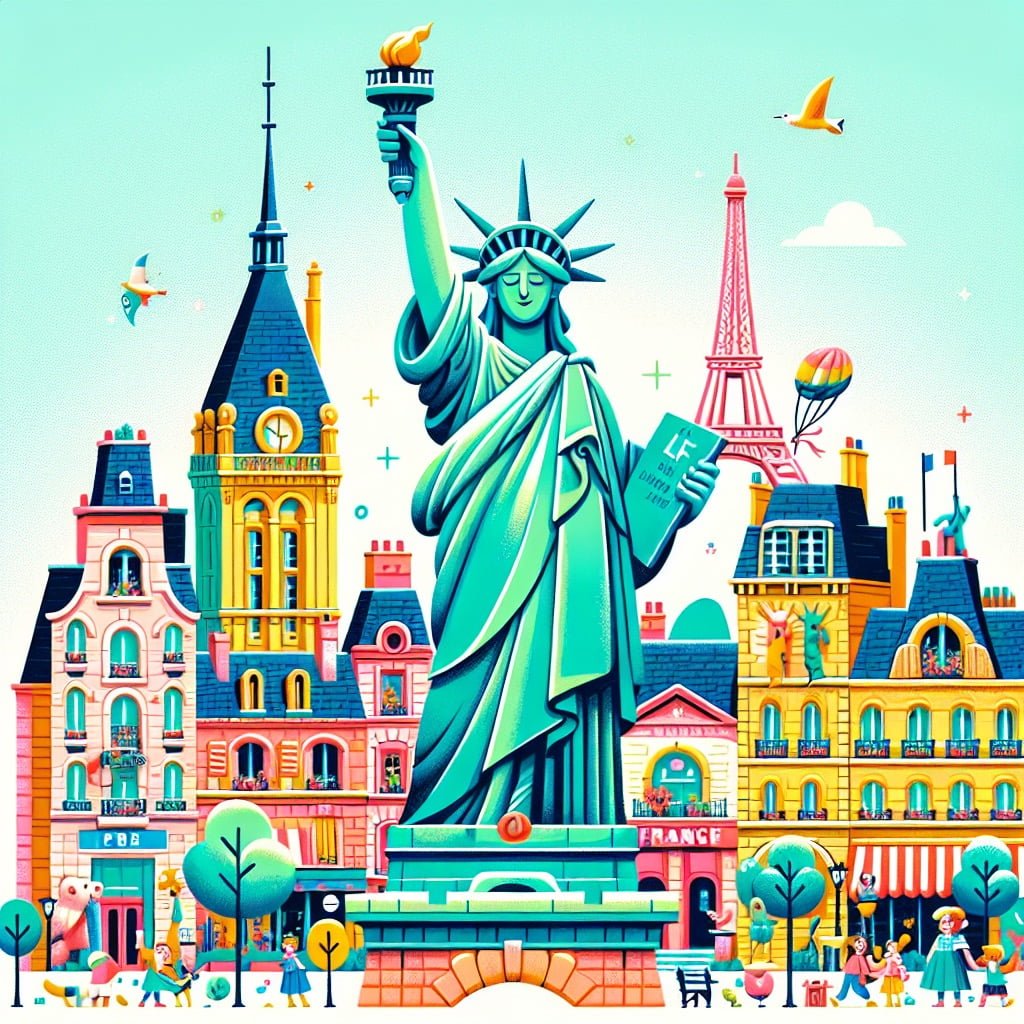
For younger kids: The Statue of Liberty was a gift to America from France and it’s really big!
For older kids: The Statue of Liberty was born in France and given to the United States as a gift to symbolize the friendship and shared values between the two countries.
Detailed explanation:One interesting fact about Europe for kids is that the Statue of Liberty in New York City actually originated in France. The iconic statue was a gift from the French people to the United States in 1886 as a symbol of friendship and freedom.
Designed by French sculptor Frédéric Auguste Bartholdi, the Statue of Liberty was constructed in France and then shipped to New York where it was assembled on Liberty Island. Standing at a height of 305 feet, the statue depicts a robed woman holding a torch above her head, representing enlightenment and freedom. The statue’s crown features seven rays, symbolizing the seven continents and seas of the world.
For kids learning about Europe, it is important to understand the historical significance of the Statue of Liberty and its connection to France. The statue serves as a reminder of the strong bond between the two countries and the values of liberty and democracy that they share.
Visitors to the Statue of Liberty can explore the museum located in the pedestal of the statue, learning about its construction and history. They can also climb up to the crown for a spectacular view of New York City and the surrounding area.
In conclusion, the Statue of Liberty in New York City is a symbol of friendship and freedom between France and the United States and is a must-see destination for kids interested in learning more about Europe.
Facts About Europe For Kids
10. The Windmills in the Netherlands
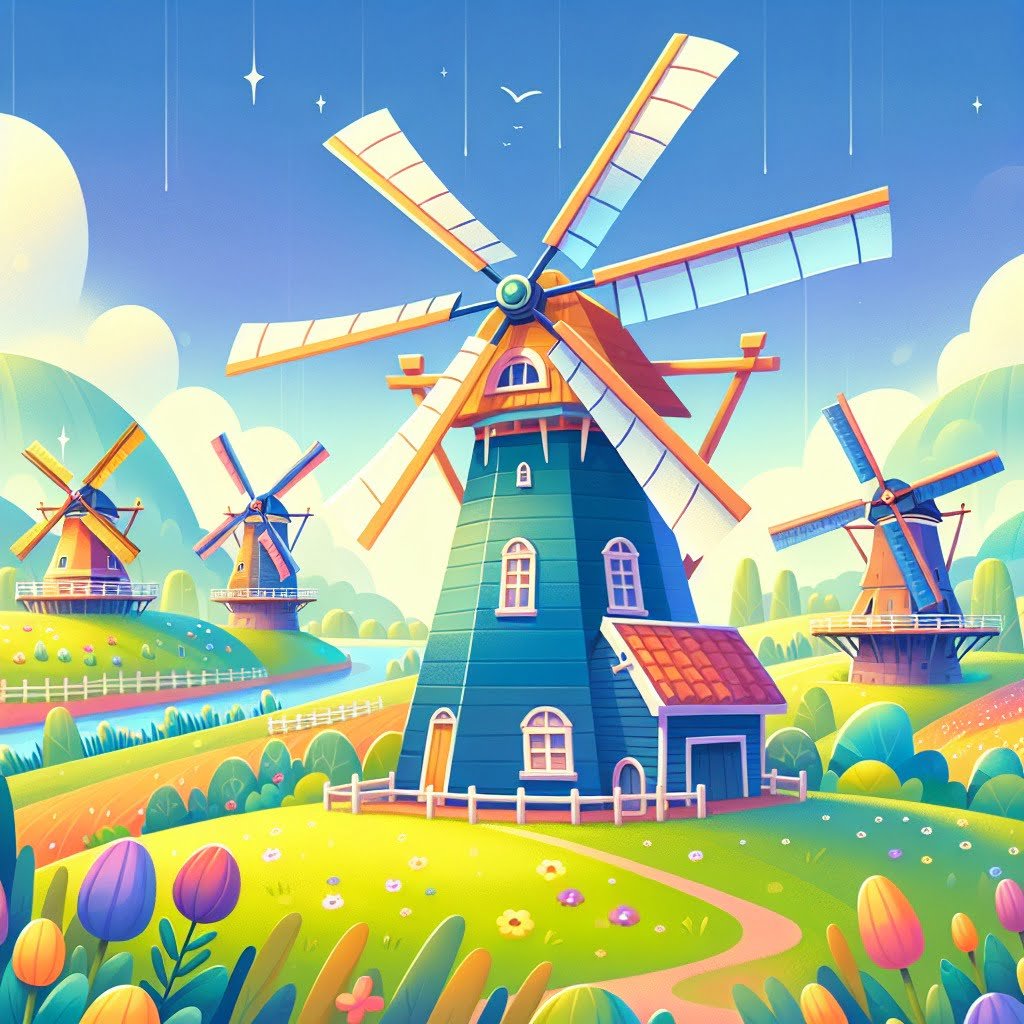
For younger kids: The windmills help make energy from the wind to do work like grinding grain!
For older kids: The windmills in the Netherlands were originally used to drain water from the land and create new polders, and they eventually became iconic symbols of the Dutch countryside.
Detailed explanation:The windmills in the Netherlands are iconic symbols of the country’s landscape and history. These traditional structures have played a crucial role in the development of the Netherlands, helping to reclaim land from the sea and power various industries such as milling grain, sawing wood, and pumping water.
One fascinating aspect of these windmills is their design, which features large, wooden sails that catch the wind and rotate a shaft connected to machinery inside the mill. This innovative technology allowed the Dutch to harness the power of the wind and convert it into usable energy long before the advent of modern electricity.
One of the most interesting Facts About Europe For Kids is that the Netherlands is home to over a thousand windmills, with some dating back to the 16th century. These windmills not only serve as a reminder of the country’s rich history, but also continue to be functional today, helping to generate sustainable energy and preserve Dutch cultural heritage.
In addition to their practical applications, the windmills in the Netherlands have also become popular tourist attractions, drawing visitors from around the world who are eager to learn more about these fascinating structures and the role they have played in shaping Dutch society.
Overall, the windmills in the Netherlands are not only a testament to human ingenuity and innovation, but also serve as a reminder of the importance of sustainable energy sources in today’s world.
Did You Know?
The continent of Europe is known for its rich history, stunning architecture, and diverse cultures that have influenced the world for centuries.
Summary of Facts About Europe For Kids
As an expert in popular science and a passionate writer, I am excited to share with you all the fascinating facts about Europe that will captivate and educate kids of all ages. Europe is much more than just a continent rich in culture and history – it is a magical land filled with wonders waiting to be discovered.
In my blog post, I will unveil fun and intriguing facts about famous landmarks, artists, and traditions that have shaped Europe into the diverse and captivating continent it is today. From the iconic Eiffel Tower in Paris to the delicious cuisine of Italy, there is so much for kids to learn and explore.
By reading more about Europe, kids will not only expand their knowledge of different countries and cultures but also gain a greater appreciation for the world around them. So, join me on this exciting journey as we uncover all the wonders this enchanting continent has to offer. Stay tuned for more fun and educational facts about Europe that will inspire curiosity and imagination in kids everywhere!
Sources and additional information for Facts About Europe For Kids
WikipediaBritannicaCIA World FactbookCentral Intelligence Agency (CIA)The World BankUnited Nations Children’s Fund (UNICEF)BBC NewsLonely PlanetCouncil on Foreign RelationsThe World Factbook (CIA)United NationsBBC Country ProfilesLonely PlanetThe World Bank CountriesUNESCO World Heritage CentreCountryReportsGlobalEdge (Michigan State University)Transparency International – The Global Corruption Barometer
